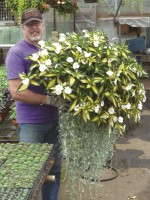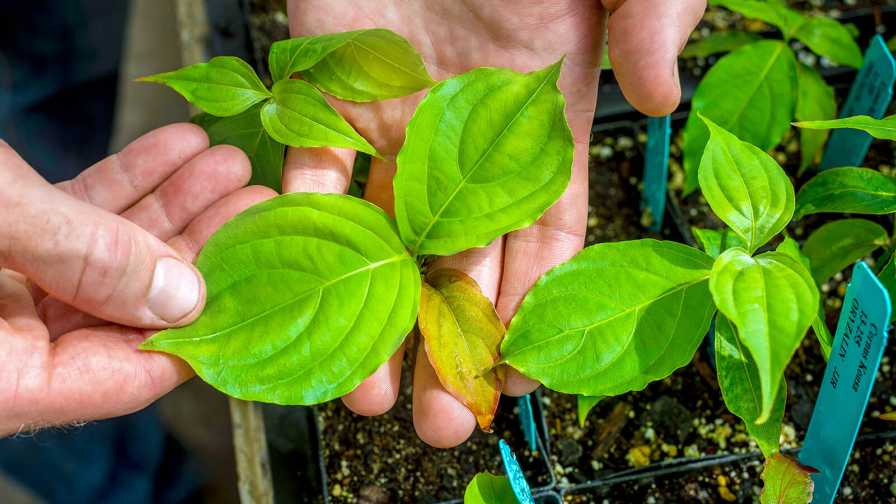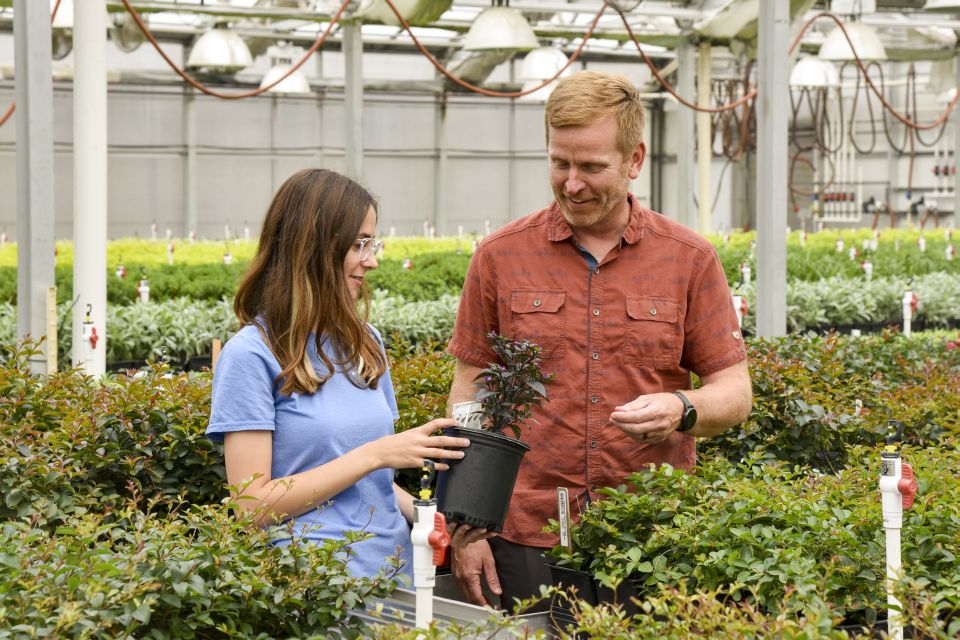Inducing Systemic Acquired Resistance: Helping Plants Help Themselves

When a group of farmers I consulted with in 1987 wanted to grow certified organic apples, I started my quest for alternative growing practices. Two years later, I founded Windy Meadow Nursery. This was the same year the Sustainable Agriculture Research and Education (SARE) organization started, and I adopted its mission statement: To advance innovations that improve profitability, stewardship and quality of life by investing in state-of-the-art research and education.
The nursery has a shallow well, which is where we draw our drinking and irrigation water. Because certain products used for growing could easily infect the water, I was motivated to start researching biological and organic alternatives to conventional fungicides and greenhouse practices. The EPA also reevaluated all the pesticides used in agriculture in 1989 and banned fungicides that were known to be estrogen mimickers and endocrine disruptors.
Getting Started With Organic Products
In the winter of 2002, the growers trialed Messenger, a new agricultural crop aid that promised accelerated growth and increased resistance to disease and insects on a variety of row crops. We witnessed a surprising growth response from sun-loving Fuchsia ‘Gartenmeister Bonstedt.’ This plant’s dark bronze leaves block light from the chlorophyll, and it normally grows very slowly in the dark months of winter in the Pacific Northwest.
Spray applications of Messenger, now sold as Employ, contain Harpin protein isolated from the fire blight pathogen Erwinia amylovora that acts as an early warning. It activates the plants’ protective systems, analogous to the immune system in animals. The plant then performs as if it’s under attack and responds with increased vigor and growth. This response is accomplished by more than one mode of action and effects several synergistic changes in the plant’s physiology.
Modes Of Action Hypersensitive Reaction
The first mode of action is called the hypersensitive reaction (HR), which induces the few cells that are in direct contact with Erwinia amylovora to shrink and collapse, effectively halting the spread of the infection to a small spot on the leaf. When Harpin protein is sprayed on leaves, a slight constriction and reinforcement of cuticle cell walls and the subsequent new growth boost resistance to emerging disease infections. The
appearance of these plants differ in the same way two plants of the same variety look when one is grown under glass or outside in direct sunlight, and the other is grown in a double poly house or outside under light shade.
Systemic Acquired Resistance
Activation of HR at the local level establishes the second whole plant immune response, systemic acquired resistance (SAR). Chemical receptors in the sprayed leaves’ pathogenesis-related genes trigger a response in the plant’s DNA, which induces the SAR response throughout the entire plant. Signals travel quickly through one of three chemical transduction pathways to all parts of the plant, providing long-lasting protection against a broad spectrum of pathogens. This process is much like a vaccination that protects people from a single strain of influenza.
Plants can also use these defense mechanisms to resist invading pests. Thorns on roses evolved over millennia as a defense mechanism against foraging animals. Research conducted at Washington State University discovered the first molecular peptide signal, systemin, which activates the entire plant to produce inhibitors of the gut enzymes insects need to digest proteins from the plant sap after just one feeding. Plant-produced protease inhibitors cause digestive upset so insects stop feeding and die from starvation.
Photosynthesis
The third response is an increase in photosynthesis. This results in more efficient growth with higher nutritional levels. Studies have shown that nutritionally dense plants are not as appetizing to insects. When light levels increase rapidly after consecutive days of dark clouds to sudden bright mid-day sun, photosynthesis can stall for several hours. Plants with SAR deployed respond better to the stress of rapid and severe fluctuation in light intensity with increased photosynthetic efficiency.
One theory suggests that higher levels of antioxidant enzymes produced in the three transduction pathways in SAR plants leads to increased rates of photosynthesis. Another theory proposes that a more ordered arrangement of chlorophyll and other organelles in the photosynthesizing palisade cells is analogous to smaller computer chips with improved architecture: This arrangement operates faster and
more efficiently.
Other Methods For Inducing SAR
Other materials we use in the nursery activate pathogenesis-related gene expression and induce SAR. Silicon induces the SAR response and enables suberization (cork development in cell walls). Since most soilless mixes do not contain silicon, we add wood ash from burning tree branches from around the nursery and the mineral olivine, which is magnesium/iron silicate. As a result, the stiffening of cell walls almost eliminates the need to use PGRs on most plants.
While researching which insecticides to use in our integrated pest management program several years ago, I was drawn to a class of chemicals called neonicotinoides, or synthetic nicotine. There are several neonicotinoides on the market that contain imidacloprid, which is the active ingredient that induces the SAR response. At least one company has picked up on the SAR attributes by advertising the vigor response side effect when using this class of insecticide, which is easier than explaining systemic acquired resistance.
Ongoing scientific research suggests that using more than one method of activating SAR may employ all three of the plants transduction pathways and amplify the plant’s ability to resist pests and accelerate growth with reduced fertilizer and pesticide inputs.
With more than a decade of experience inducing systemic acquired resistance in the nursery and gaining the reputation for consistently having the best quality in the region, the advantage we enjoy is the plant health element. More robust plants with improved stress tolerance leads to a healthier, more marketable plant that is better looking and more likely to be purchased by the home gardener shopping at the independent garden centers we serve.









